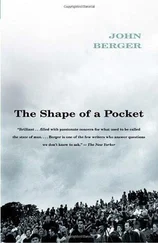Ahlam Shibli's pictures are discreet, elusive and persistent. They contain the minimum of general information and they never report about incidents or events. One has the impression that each one has been taken just after something has happened. Not because Shibli was too slow, but because what interests her is affect . Events, as such, do not (at least in this project) concern her; the impact of an event on a life does. And so she is prepared to wait.
She watches the military training of the trackers, trackers going on leave, a cemetery with soldiers' graves, the taking of an oath of allegiance to the IDF sworn on the Koran, the interior of a house with family pictures on the wall, new houses being slowly built thanks to the professional army pay the trackers are earning. Each different location leads slyly to a query. For these men, what constitutes a home? Or, more slyly: To where and what do they have a sense of belonging?
There is never anybody there in the picture to tell us what happened just before it was taken. All we can do is to look at the participants who remain and then guess for ourselves and, like Shibli, wait. The effect of the whole series (eighty-five photos) is cumulative. They fit together to make a whole. Yet what does the whole add up to?
For Bedouin the issue of home and what constitutes a home is as entwined as a rope. Traditionally they are a nomadic people. Two or three generations ago, particularly in the Sinai, many Bedouin families became sedentary, yet the land they settled on belonged to somebody else, and on it they had minimal rights. A confused situation in which atavistic memories perhaps play a part. For nomads, home is not an address, home is what they carry with them.
What do the trackers carry?
Ahlam Shibli is soul-searching. Yet she avoids soulfulness and never seeks a confession. She watches patiently from the side. One might say she was a storyteller, yet this would be to simplify her chosen role. (There are great photographic storytellers — Andrá Kertesz, for example.) Ahlam Shibli, I would say, is a fortune-teller. She observes intensely, reads the signs, guesses and proffers her prophesy which, like a soothsayer's, is both sharp and unclear; it lays out the chances like playing cards, yet doesn't select one.
Select three. In the first, three trackers, sheltering, take a rest, and one of them is writing something on a public wall. In the second, a man asleep in the daytime has pulled a cover over his face. In the third are the photos a tracker has framed of himself as an IDF warrior, on a wall in his house, beside an old map of Palestine.
In each one, differently expressed, is the same dilemma concerning identity and whereabouts.
What are they carrying?
Traditionally, and over the centuries, nomadic Bedouin clans have offered their services to any invading force — be it Egyptian, Turkish, British — whenever they recognized that they themselves, with all their guerrilla skills, were nevertheless outflanked. They did this, however, to avoid being disbanded and in order to remain independent, unchallengeable on their own almost impenetrable territories. It was a cunning strategy for continuity which often succeeded.
Today, the circumstances for Israeli Bedouins have become very different. They have been hounded off their land and stripped of their economic means of survival. In their own Negev desert they are treated as criminal trespassers, and their crops are sprayed with herbicide from IDF helicopters.
To grasp finally what this means we have to take account of the extremity of the Palestinian situation in general. The Palestinian — Israeli conflict has lasted nearly sixty years. The military occupation of Palestine — the longest in history — has lasted nearly forty years. Scarcely necessary to repeat all the facts that this occupation entails, for they have been internationally recognized and condemned.
What is sometimes forgotten about this continuing conflict — for the Palestinians continue to resist — is the disparity, the inequality of means, whether in terms of firepower or defence.
Such a disparity of resources and arms recalls the midtwentieth century colonial wars of liberation, and if we want to understand the trackers' dilemma we could not do better than consult the writings of Frantz Fanon, who was a visionary prophet of those struggles. At the end of Black Skin, White Masks , he writes:‘At the conclusion of this study, I want the world to recognize, with me, the open door of every consciousness.' Ahlam Shibli, writing about her Trackers , refers often to Frantz Fanon.
As a doctor and psychiatrist from Martinique working in Algeria, Fanon explained how colonial domination, how the disparity of means between the invader and the indigenous, how the contempt inwritten into every encounter between the armed and the unarmed, besides producing revolt, can also lead to a gash in those allegiances which maintain a person's sense of self. And that this happens most frequently and woundingly amongst the poorest and the most underprivileged of the trampled-on.
An image may help to make this more clear. Consider the opposite syndrome, which is that of the megalomaniac. Every encounter with another person works for the megalomaniac like a held-up mirror in which he sees himself reflected and decked out in his own glory. For the colonized, who has lost his sense of self, every encounter is a mirror in which he sees nothing but a soiled djellaba. Both held-up mirrors hide the other as she or he really is. And so it happens that the colonized, in order to disassociate himself from the soiled djellaba, dreams of wearing the uniform or carrying the flag of his oppressor. Not his enemy, his oppressor.
The Bedouin are amongst the most underprivileged of Palestinians and they have lost, for the most part, their nomadic liberty and the pride that went with it. So it can happen, as Fanon foresaw, that they split themselves in two, and, tearing themselves apart, wear the mask of their oppressors. Many change their names from Ahmed to Josá, from Mohammed to Moshe. Yet, in doing this, the trackers do not refind their own bodies, their noble bodies that are calumnied by the false image of the soiled djellaba.
The man with the bed cover pulled over his head is dreaming of what? One can never guess at what somebody else is dreaming. Yet he can probably not guess at his own dream .
Something like this is what the trackers carry.
The work of Ahlam Shibli makes no direct political comment on the Israeli — Palestinian conflict; it refrains from slogans. Yet I believe that in today's global context it is politically important — or, as I said, exemplary. And I will try to explain why.
Ahlam Shibli herself comes from a Bedouin family. As a young girl she was herding goats in Galilee. Later, after studying at university, she became a photographer of international renown.
Long ago, she made the opposite existential choice to the trackers whom she shows in these photos. She believes in the justice of the Palestinian cause and has protested as a patriot and a photographer against the illegal Israeli Occupation. For her, as for most Palestinians, the trackers can be considered traitors. They have joined an army which is oppressing the Palestinian people and they stalk to kill and capture those who actively resist that army. Traitors … In certain circumstances, they must be treated as such.
Nevertheless Ahlam Shibli feels a need to go beyond, and search behind the simplifying label. Because she is a Bedouin herself? Maybe, but the question is naive. What counts is the result. Because she is Bedouin, she was able to search behind the label and discover what she had to discover. With these photographs she posed the question: What price are they paying for their decision to become trackers? Then she waited for the enigmatic answers which she found in her darkroom. And these she makes public.
Читать дальше












